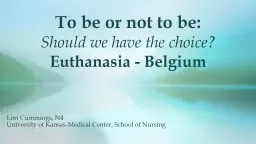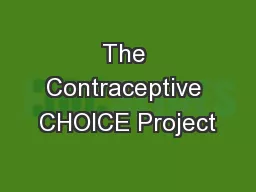PPT-To be or not to be: Should we have the choice?
Author : tatiana-dople | Published Date : 2020-04-03
Euthanasia Belgium Lori Cummings N4 University of KansasMedical Center School of Nursing City and Country Visited The program was located in Ghent Belgium but visited
Presentation Embed Code
Download Presentation
Download Presentation The PPT/PDF document " To be or not to be: Should we have the..." is the property of its rightful owner. Permission is granted to download and print the materials on this website for personal, non-commercial use only, and to display it on your personal computer provided you do not modify the materials and that you retain all copyright notices contained in the materials. By downloading content from our website, you accept the terms of this agreement.
To be or not to be: Should we have the choice?: Transcript
Download Rules Of Document
" To be or not to be: Should we have the choice?"The content belongs to its owner. You may download and print it for personal use, without modification, and keep all copyright notices. By downloading, you agree to these terms.
Related Documents














